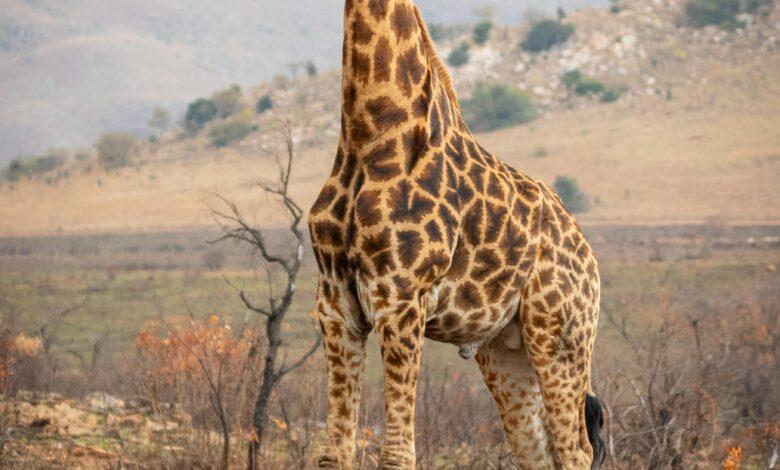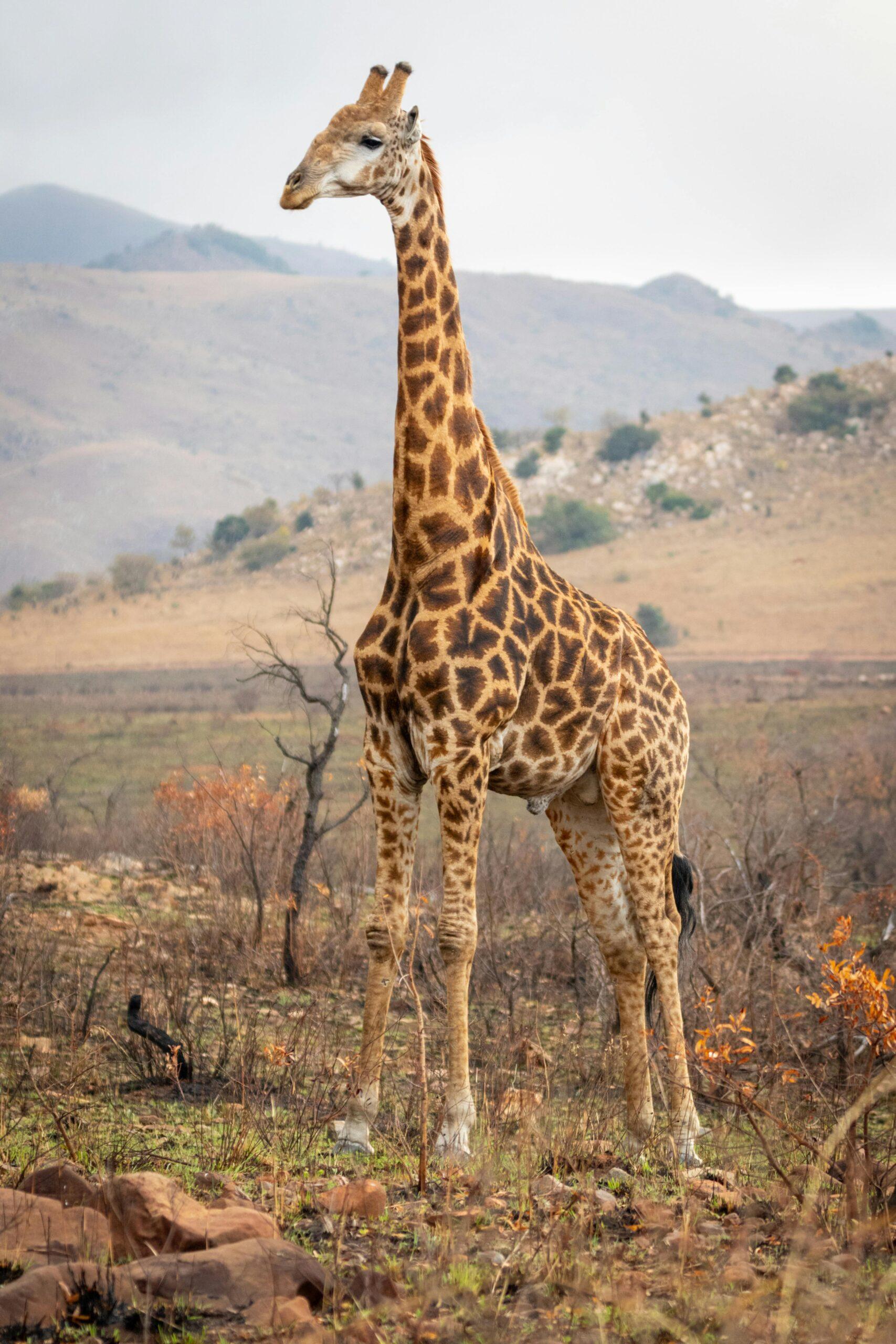Wildlife Encounters 🦌: Discovering Banff National Park
Exploring the Natural Wonders and Wildlife Diversity of Banff National Park

Introduction
Welcome to Banff National Park, a pristine wilderness sanctuary nestled in the heart of the Canadian Rockies. In this article, we invite you to join us on a journey into the wild as we explore the rich biodiversity and incredible wildlife encounters that await within this iconic national park. From majestic grizzly bears roaming the mountain slopes to elusive elk grazing in alpine meadows, Banff offers an unparalleled opportunity to connect with nature and witness the beauty of wildlife in its natural habitat.
Wildlife Species Found in Banff National Park
Banff National Park is home to a diverse array of wildlife species, offering visitors the opportunity to observe these magnificent creatures in their natural habitat. Some of the most sought-after species include:
Grizzly Bears
Grizzly bears are iconic inhabitants of Banff National Park, known for their awe-inspiring presence. These majestic animals can often be spotted foraging for food in the park’s meadows and forests, particularly during the spring and early summer months.
Elk
Elk, also known as wapiti, are another common sight in Banff National Park. These large herbivores roam the park’s valleys and meadows, especially during the mating season in the fall. Visitors may catch glimpses of elk grazing or bugling in open areas.
Bighorn Sheep
Bighorn sheep are well-adapted to the rugged terrain of Banff National Park, where they can be found scaling steep cliffs and rocky slopes. These impressive animals are often seen in the higher elevations of the park, where they graze on grasses and shrubs.
Best Times and Locations for Wildlife Viewing
While wildlife can be encountered throughout the year in Banff National Park, certain times and locations offer better opportunities for sightings. Early mornings and evenings are prime times for wildlife viewing, as animals are often more active during these cooler hours. Additionally, specific areas within the park are known for their high concentrations of wildlife, including:
Lake Louise
Surrounded by towering mountains, Lake Louise is a hotspot for wildlife activity. Visitors may encounter a variety of species, including elk, deer, and occasionally bears, along the shores of the lake and on nearby hiking trails.
Bow Valley Parkway
The scenic Bow Valley Parkway is renowned for its wildlife sightings, particularly of elk, deer, and bears. Slow driving along this route increases the chances of encountering these animals, especially during the quieter hours of the day.
Moraine Lake Road
Moraine Lake Road offers breathtaking views of one of Banff’s most iconic lakes and provides opportunities for spotting wildlife such as elk and bears, particularly during the early morning or late evening hours.
Responsible Wildlife Watching Tips and Guidelines
Responsible wildlife watching is essential for the well-being of both animals and visitors. To minimize disturbance and ensure a safe and enjoyable experience, follow these tips:
Keep Your Distance
Always maintain a safe distance from wildlife and use binoculars or a telephoto lens for close-up views. Approaching or feeding wild animals is dangerous and can disrupt their natural behaviors.
Respect Wildlife Habitat
Stay on designated trails and roads to avoid trampling sensitive habitat. Be mindful of nesting birds and other wildlife that may be easily disturbed by human presence.
Be Quiet and Patient
Reduce noise levels and sudden movements to avoid startling wildlife. Patience is key when observing animals, so take your time and enjoy the experience from a distance.
Leave No Trace
Dispose of waste properly and refrain from littering in the park. Pack out all trash and respect park regulations to help preserve the natural environment for future generations.
Exploring Banff’s Natural Habitats
Forests of Banff National Park
Banff National Park boasts an array of ecosystems, each contributing to its rich biodiversity. Among these are its diverse forests, encompassing everything from lush, lowland forests to alpine woodlands. The park is primarily characterized by coniferous forests, dominated by species such as spruce, fir, and pine. These forests provide critical habitat for numerous wildlife species, offering shelter, food, and nesting sites. From the dense canopies to the forest floor, a variety of mammals, birds, and insects thrive in this environment.
Mountains and Alpine Meadows
The towering peaks and alpine meadows of Banff National Park create another vital habitat within its boundaries. As elevation increases, the landscape transitions from dense forests to open meadows dotted with wildflowers. These high-altitude areas support a unique assemblage of species adapted to harsh conditions. Mountain goats, bighorn sheep, and pikas are among the notable inhabitants, while birds such as ptarmigans and golden eagles soar above the rugged terrain. The alpine environment not only sustains wildlife but also plays a crucial role in regulating water flow to lower elevations.
Lakes and Wetlands
The numerous lakes and wetlands scattered throughout Banff National Park serve as essential habitats for a wide range of aquatic and terrestrial species. These pristine water bodies provide refuge for fish, amphibians, and waterfowl, while the surrounding marshes support diverse plant life and nesting grounds for birds. Lake Louise, Moraine Lake, and Vermilion Lakes are renowned for their stunning scenery and abundant wildlife sightings. Visitors can observe grizzly bears foraging along the shores, elk grazing in meadows, and a variety of waterfowl paddling in the shallows.
River Valleys and Riparian Zones
The river valleys crisscrossing Banff National Park harbor rich riparian zones, where the lush vegetation thrives in the fertile soils nourished by flowing water.

Notable Wildlife Encounters
Personal Anecdotes
Encountering wildlife in Banff National Park is often a transformative experience, leaving visitors with unforgettable memories. One particularly memorable encounter occurred during a sunrise hike along the Parker Ridge Trail. As the golden light illuminated the surrounding peaks, a majestic elk emerged from the forest, its antlers silhouetted against the morning sky. The encounter was both exhilarating and humbling, highlighting the intimate connection between humans and the natural world.
Another remarkable moment occurred while camping near Lake Louise. In the quiet stillness of the evening, a curious black bear approached our campsite, its dark fur glinting in the moonlight. Though initially startled, we remained calm and watched in awe as the bear sniffed around before wandering off into the wilderness. This encounter served as a reminder of the importance of respecting wildlife boundaries while appreciating their beauty from a safe distance.
Photography Tips
Capturing wildlife moments in Banff requires patience, respect, and a keen eye for detail. When photographing animals, prioritize their well-being by maintaining a safe distance and avoiding any actions that may cause distress. Utilize a telephoto lens to capture intimate shots from afar, allowing you to observe natural behaviors without disrupting the animals’ routines.
Experiment with different angles and compositions to create visually compelling images. Consider incorporating elements of the surrounding landscape to provide context and depth to your photographs. Additionally, be mindful of lighting conditions, opting for soft, diffused light during the golden hours of sunrise and sunset for optimal results.
Conservation Efforts and Future Challenges
Overview of Conservation Initiatives in Banff National Park
Conservation efforts in Banff National Park have been robust, aiming to protect the diverse wildlife that calls this region home. One key initiative is the implementation of wildlife corridors, which allow animals to move freely between different habitats, reducing the risk of isolation and genetic decline. Additionally, park authorities have instituted measures to mitigate the impact of human activity on wildlife, such as seasonal road closures and strict regulations on backcountry camping.
Ongoing Challenges: Habitat Fragmentation and Human-Wildlife Conflicts
Despite these efforts, Banff still faces significant challenges in conservation. Habitat fragmentation remains a pressing issue, as human development continues to encroach upon natural areas, dividing wildlife habitats and disrupting migration routes. This fragmentation can lead to reduced genetic diversity and increased vulnerability to environmental changes. Moreover, human-wildlife conflicts persist, with incidents ranging from vehicle collisions to confrontations between visitors and animals. Balancing the needs of wildlife with the growing demands of tourism and recreation presents a complex challenge for park management.
Ways Visitors Can Support Conservation Efforts
Visitors play a crucial role in supporting conservation efforts and minimizing their impact on wildlife. One way to contribute is by respecting park regulations and guidelines, including speed limits and wildlife viewing protocols. Additionally, staying on designated trails helps preserve fragile ecosystems and reduces the risk of disturbing wildlife habitats. Supporting local initiatives and organizations dedicated to conservation can also make a difference, whether through donations or volunteer work. Ultimately, by adopting responsible behaviors and promoting awareness among fellow visitors, individuals can help safeguard Banff’s natural heritage for future generations.




Facebook Comments